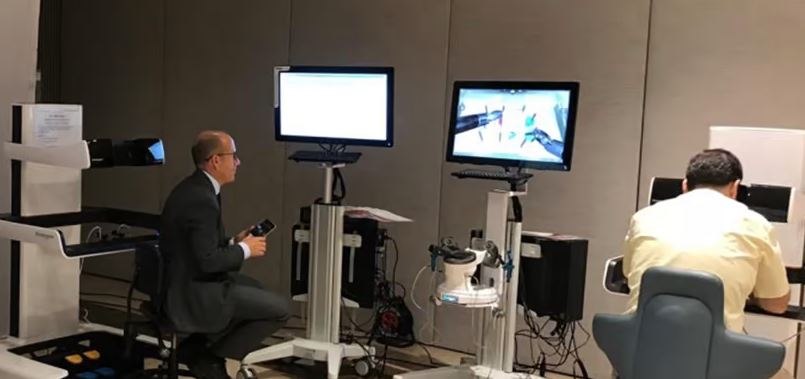Customer Company Size
Large Corporate
Region
- America
Country
- United States
Product
- ICONICS GENESIS64™ HMI/SCADA suite
- AnalytiX® suite
- Facility AnalytiX predictive software
Tech Stack
- Microsoft Azure
Implementation Scale
- Departmental Deployment
Impact Metrics
- Cost Savings
- Energy Saving
- Productivity Improvements
Technology Category
- Infrastructure as a Service (IaaS) - Cloud Computing
- Analytics & Modeling - Predictive Analytics
- Platform as a Service (PaaS) - Data Management Platforms
Applicable Industries
- Education
Applicable Functions
- Facility Management
Use Cases
- Building Automation & Control
- Building Energy Management
- Predictive Maintenance
Services
- Cloud Planning, Design & Implementation Services
- Data Science Services
About The Customer
The Peirce School is a public elementary school located in the town of Arlington, MA. The school is named after Captain Solomon Peirce, who served in the Revolutionary War. The original school building was built in 1924 and demolished in 2001. The current school facilities were built in 2003. The Town of Arlington, working with Microsoft, selected ICONICS GENESIS64™ HMI/SCADA suite, in addition to the AnalytiX® suite of analytical tools, including Facility AnalytiX predictive software for facilities management.
The Challenge
Arlington Public Schools sought to consolidate its summer-school operations into one building at The Peirce School. Anticipating the need for an increase in air conditioning, the district immediately purchased a new chiller for the school building. The Regional Energy Manager for the town of Arlington, Ruthy Bennett, is responsible for looking for ways to reduce energy costs, a high priority for a town named a Green Community by the State of Massachusetts in 2010. The town and school district, both operating on tight budgets, wished to ensure that their decisions to consolidate summer school classes to one location and to purchase a new chiller made financial sense. With the goal towards lower energy and operational costs, Bennett sought energy management software that would be more beneficial than what she considered “glorified schedulers”. While researching solutions, she learned of ICONICS’ Facility AnalytiX being used to help cut energy costs at Microsoft’s headquarters in Redmond, WA.
The Solution
After taking a look at competitors’ offerings, Bennett, the town and the school district decided on ICONICS. Based on advanced Facility Detection and Diagnosis (FDD) technology, Facility AnalytiX uses customizable fault rules to weigh the probability of equipment failure and alerts staff to actions they can take when faults occur. When equipment fails, the software analyzes current and historical information (along with symptom/cause relationships), executes probability algorithms, and provides a list of possible causes sorted by probability. To save on project costs for the town and school district, Bennett opted to utilize Facility AnalytiX’ ability to integrate with Microsoft’s Azure cloud computing platform. With no additional hardware required, installation was quick. ICONICS engineers connected equipment with control boxes that communicate with the cloud. Using Facility AnalytiX with Azure also allows the school district to access and store millions of data points across a wider range of time, rather than their previous 72-hour restriction.
Operational Impact
Quantitative Benefit

Case Study missing?
Start adding your own!
Register with your work email and create a new case study profile for your business.
Related Case Studies.

Case Study
Revolutionizing Medical Training in India: GSL Smart Lab and the LAP Mentor
The GSL SMART Lab, a collective effort of the GSL College of Medicine and the GSL College of Nursing and Health Science, was facing a challenge in providing superior training to healthcare professionals. As clinical medicine was becoming more focused on patient safety and quality of care, the need for medical simulation to bridge the educational gap between the classroom and the clinical environment was becoming increasingly apparent. Dr. Sandeep Ganni, the director of the GSL SMART Lab, envisioned a world-class surgical and medical training center where physicians and healthcare professionals could learn skills through simulation training. He was looking for different simulators for different specialties to provide both basic and advanced simulation training. For laparoscopic surgery, he was interested in a high fidelity simulator that could provide basic surgical and suturing skills training for international accreditation as well as specific hands-on training in complex laparoscopic procedures for practicing physicians in India.

Case Study
IoT platform Enables Safety Solutions for U.S. School Districts
Designed to alert drivers when schoolchildren are present, especially in low-visibility conditions, school-zone flasher signals are typically updated manually at each school. The switching is based on the school calendar and manually changed when an unexpected early dismissal occurs, as in the case of a weather-event altering the normal schedule. The process to reprogram the flashers requires a significant effort by school district personnel to implement due to the large number of warning flashers installed across an entire school district.

Case Study
Implementing Robotic Surgery Training Simulator for Enhanced Surgical Proficiency
Fundacio Puigvert, a leading European medical center specializing in Urology, Nephrology, and Andrology, faced a significant challenge in training its surgical residents. The institution recognized the need for a more standardized and comprehensive training curriculum, particularly in the area of robotic surgery. The challenge was underscored by two independent studies showing that less than 5% of residents in Italian and German residency programs could perform major or complex procedures by the end of their residency. The institution sought to establish a virtual reality simulation lab that would include endourological, laparoscopic, and robotic platforms. However, they needed a simulator that could replicate both the hardware and software of the robotic Da Vinci console used in the operating room, without being connected to the actual physical console. They also required a system that could provide both basic and advanced simulation training, and a metrics system to assess the proficiency of the trainees before they performed surgical procedures in the operating theater.

Case Study
Edinburgh Napier University streamlines long-distance learning with Cisco WebEX
• Geographically dispersed campus made in-person meetings costly and inconvenient.• Distance-learning programs in Malaysia, India, and China required dependable, user-friendly online tools to maximize interaction in collaborative workspaces.• Virtual learning environment required a separate sign-in process, resulting in a significant administrative burden for IT staff and limited adoption of collaboration technology.

Case Study
8x increased productivity with VKS
Before VKS, a teacher would spend a lot of time showing a group of 22 students how to build a set of stairs within a semester of 120 hours. Along with not leaving the teacher much time to provide one-on-one support for each student to properly learn carpentry, it also left a considerable amount of room for error. Key information would be misinterpreted or lost as the class was taught in the typical show-and-tell way.

Case Study
Scalable IoT Empowering GreenFlex's Sustainable Growth
GreenFlex, a company that supports sustainable development, decarbonization, and energy efficiency, faced several challenges in its quest to expand its business. The company needed to deploy a robust and sustainable IoT technology to support its growth. It was crucial for them to monitor and control devices at customer sites in a safe and reliable manner. They also needed to integrate devices across a range of communication protocols and gather and act on data to meet efficiency targets. GreenFlex had previously built IoT capabilities into its digital platform, GreenFlexIQ, to monitor and manage customer sites remotely. However, they soon realized that they needed a new platform to support their ambitions. They needed a platform that could scale to connect more devices for production management and make it easier for the operations team to manage devices in the field.






